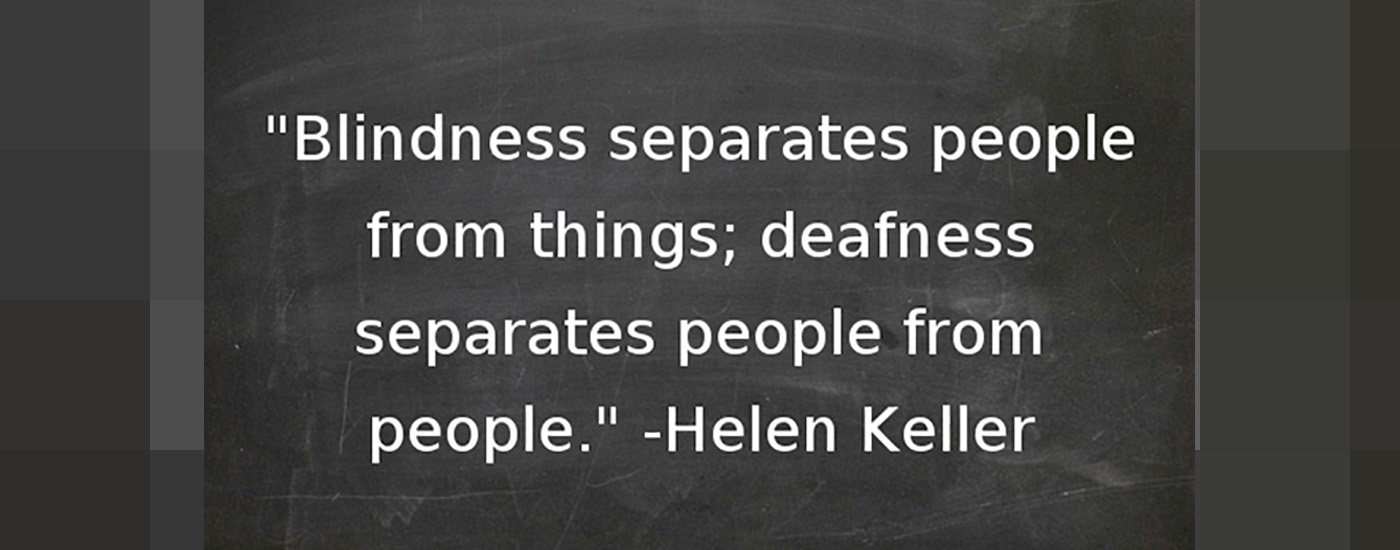Hearing Loss Is a Public Health Matter
Updated: March 16, 2021
Approximately 30 million Americans report some extent of hearing loss. By the age of 65, one out of every three people will suffer from hearing loss. As the number of older adults continues to increase in the United States, hearing loss will become an even greater concern. Already hearing loss is, globally, the fifth leading cause of years lived with a disability.
The Social Sense
Hearing is important for health, well-being and quality of life. Often referred to as the “social sense,” hearing is integral to forming and sustaining relationships and social connections with family and friends. Hearing plays an equally important role in how individuals connect with and experience the environment which surrounds them. Despite all of this, hearing loss has continually been regarded as an individual matter, rather than a public health matter.
A Public Health Concern
Influenced and affected by decisions and actions at many levels, hearing loss is undeniably a public health concern. The National Academy of Sciences, Engineering, and Medicine, a private non-profit organization, recently issued a series of recommendations for institutional changes that would “enable consumers to find and fully use the appropriate, affordable, and high-quality services, technologies, and support they need.” These changes in education, awareness, access, and affordability, as well as technologic advances, span society. It will take a combined and continuous effort to turn these recommendations into reality.
Education and Awareness
Education is vital to every aspect of dealing with hearing loss. Did you ever wonder why it’s so commonplace for people to wear contacts or glasses, but less so for people to wear hearing devices? There is still a stigma around hearing loss, possibly due to the misconception that hearing loss is associated with aging. Although the association exists, it is not actually true. The majority (65%) of people with hearing loss are below age 65. Nevertheless the stigma remains.
By educating individuals about hearing loss, the stigma that surrounds this disability will begin to diminish. Having the right education and information about hearing loss allows individuals to compare technologies and health care services to make well informed decisions about their treatment.
It is also recommended that the educational information available to the greater public be expanded and improved. The information encompassed should address the wide range of services and technologies, as well as their comparative effectiveness and costs. This information must be presented in a way that is understandable for adults of all literacy levels. By educating the greater population, the likelihood that employers and communities will be willing and able to promote supportive work and community environments will increase. Additionally, it will be easier for them to ensure compliance with the Americans with Disabilities Act.
Access and Affordability
Many people report dissatisfaction with hearing health care in the United States. Hearing-related services, such as hearing aids and other assistive technologies, play a key role in hearing health care, as do evaluations, diagnoses, and treatments. However, these services and treatments are often costly and difficult to access. In fact, because of poor access and high costs, most hearing aid users live with hearing loss for many years before seeking a hearing aid. The hearing health care system in the United States is simply not meeting the needs of the majority of adults who suffer from hearing loss.
A number of recommendations are given to improve accessibility. One suggestion is the removal of barriers such as the regulation that an adult seeking hearing aids be required to first have a medical evaluation by a physician. Additionally, public health agencies and health care providers should take into account hearing health in regular medical and wellness visits when there is cause for concern.
Affordability also plays a huge part in making health care decisions. Nearly all expenses for adult hearing health care are to be paid for out-of-pocket. In order to improve affordability of hearing health care, the committee recommends that payers, such as the Centers for Medicare & Medicaid Services, evaluate options to provide more coverage to their beneficiaries.
Hearing Devices and Technologies
There are several different types of hearing loss, and many ways in which hearing loss can present itself. While some people have mild hearing loss, others have severe hearing loss, and while some are born with hearing loss, others develop it later on in life. With a wide range of types and severity of hearing loss, a wide range of technologies should be available to meet these diverse and unique needs. Captioning, for example, is a critical technology for individuals who are Deaf or hard of hearing. The Federal Communications Commission sets quality standards for captioning. Like captioning, other assistive technologies should be required to meet high standards for safety, quality, and compatibility with other devices.
The committee recommends that the U.S. Food and Drug Administration create a category of over the-counter wearable hearing devices, in order to increase the number of options available to consumers. These devices would also be required to meet quality assurance standards. These changes will allow consumers and patients to be more hands-on and gain greater control over their own health.
With the expansiveness of this disability and the large number of people it impacts, hearing loss is a public health concern. You can play your part by sharing the report, educating yourself and others in your community about hearing loss, and captioning your videos to make them accessible.
__
3Play Media is putting a name and a face to individual stories of Deaf and hard of hearing individuals with a project called Faces Behind the Screen. We’re working to close the gap between the legal need for accessible media and the reason why it’s important. Click below to learn more.
Further Reading

Subscribe to the Blog Digest
Sign up to receive our blog digest and other information on this topic. You can unsubscribe anytime.
By subscribing you agree to our privacy policy.






